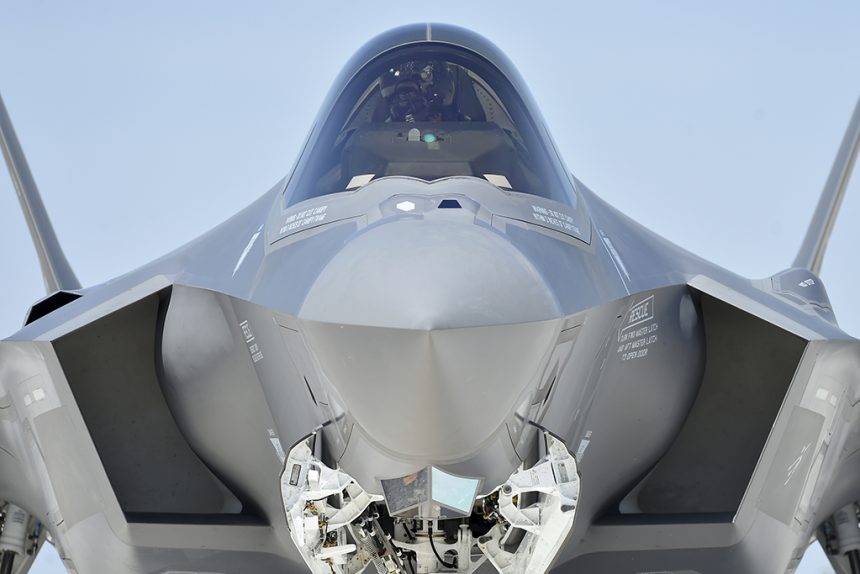According to local media, the Belgian MOD “refused” the delivery of the new F-35A destined to the Belgian Air Component, but there’s more to it.
It looks like the long awaited delivery of the first two F-35A aircraft for the Belgian Air Component is not going to take place by the end on this year. In fact, according to VRT NWS [whose report is titled “Belgium refuses new F-35A fighters because they are (for the time being) technically unsatisfactory”] the first two aircraft, that were scheduled to be delivered in 2023, will be delivered next year, with an additional delay of about six months.
In October 2018, Belgium decided to procure the Lockheed Martin F-35A Lightning II to replace the Belgian Air Component’s fleet of 54 F-16 Fighting Falcon jets, whose phase-out was expected between 2023 and 2028. According to the initial timetable, four F-35s had to be delivered, annually, between 2023 and 2030. But the very first batch of four stealth fighters was delayed by the Covid-19 emergency and the impact the pandemic had on the subcontractors. The revised plan called for the first two Belgian F-35As to be delivered at the end of 2023 and two more ones during the first quarter of 2024. However, the plan has undergone a further change.
“Based on the current schedule, the hardware will be ready by December 2023. The certification and qualification of the software and the final delivery of the aircraft depend on the results of the test campaign and are currently estimated for the second quarter of 2024,” said the a Belgian Defense spokesperson cited by VRT NWS.
Obviously, the delayed delivery of the first aircraft to Luke Air Force Base, U.S., where BAF pilots will be trained on the type, will have an impact on the training schedule and, possibly, on the preparedness status of the Belgian Air Force. Still, the Belgian MOD appears to be cautiously optimistic: “if the delay is limited to a few months, it will have little or no impact on the eventual gradual operational build-up (Initial Operational Capability by 2027 and Full Operational Capability around 2030)”.
The issue lies in the Tech(nology) Refresh 3 (TR-3) upgrades. As we already reported, TR-3 includes both software and hardware upgrades and is considered essential in order to deliver the Block 4 upgrade and the future ones, being described as the IT backbone for all future improvements. TR-3 will be installed in all new production aircraft and retrofitted on all the F-35s already in service back to Lot 10. The retrofit, which requires 14 days of downtime, will be performed during scheduled maintenance. This way the F-35 will migrate to the open-system architecture and exploit all its advantages, like adding new or improved capabilities on operational aircraft very quickly and at a reduced cost.
Here are some details about TR-3 configuration and Block 4 capabilities we have discussed in our previous article on the first test flight of the first upgraded F-35:
Over 75 major upgrades expected to be included in the upcoming Block 4 F-35. Among the upgrades there are enhancements of the Electronic Warfare capabilities, radar and electro-optical systems, weapons, cockpit and navigation systems. Some of these upgrades will be delivered in increments until the final configuration, for which an engine upgrade might be required in order to provide more power to all the systems.
Among the unclassified upgrades there are a next generation Distributed Aperture System, a new Integrated Core Processor, cooling systems enhancements, new Electronic Warfare processor and antennas. Unclassified slides from Lockheed Martin also show Auto Ground Collision Avoidance System integration, a new Open System Architecture, Multi-Domain Operations and Missile Defense capabilities, Manned-Unmanned Teaming and extended range with the use of external fuel tanks.
A recently confirmed upgrade that will come with Block 4 is the new APG-85 AESA radar, which will replace the current APG-81. The majority of the details about the Block 4 upgrades, however, are classified. Often considered the F-35’s most ambitious upgrade, the Block 4 is meant to help keep the Lightning II’s fighting edge over potential adversaries through 2070.
The contract that Belgium and other nations have signed with the US states that the F-35s must be delivered in the most recent/modern available configuration. Therefore, Belgium wants its F-35s to be delivered with the Block 4 upgrade, whose certification is taking more time than expected.
“In concrete terms, the US government’s refusal [of delivery of new aircraft] means that the process of certification and qualification is still ongoing and that the US government does not wish to accept (and therefore pay for) hardware as long as the software is not fully completed. This is a completely logical decision that also applies to Belgium.”
Therefore, although it’s being framed as a refusal because the aircraft is “technically unsatisfactory”, it seems that the Belgian MOD is simply demanding delivery of the latest version of the aircraft and, as a consequence, prefers to wait for this to be certified. In fact, as explained in the VRT NWS article the Belgian MOD pointed out that if the delays can be limited, the country will have the advantage “of a uniform fleet, equipped with the latest Tech Refresh 3 hardware. After all, this not only provides access to new Block 4 capabilities, but also avoids a later costly retrofit of many months.”
H/T to our reader Jean-Paul Van De Walle for the heads-up!









